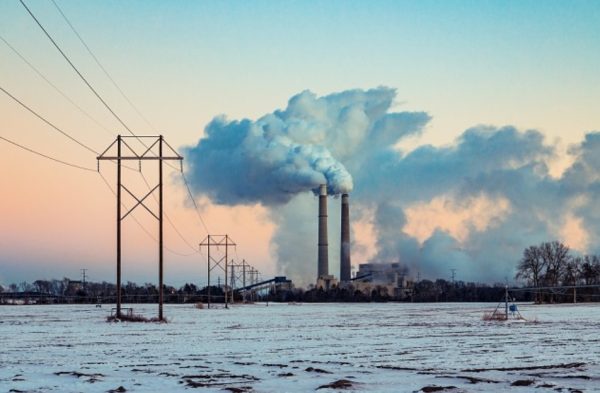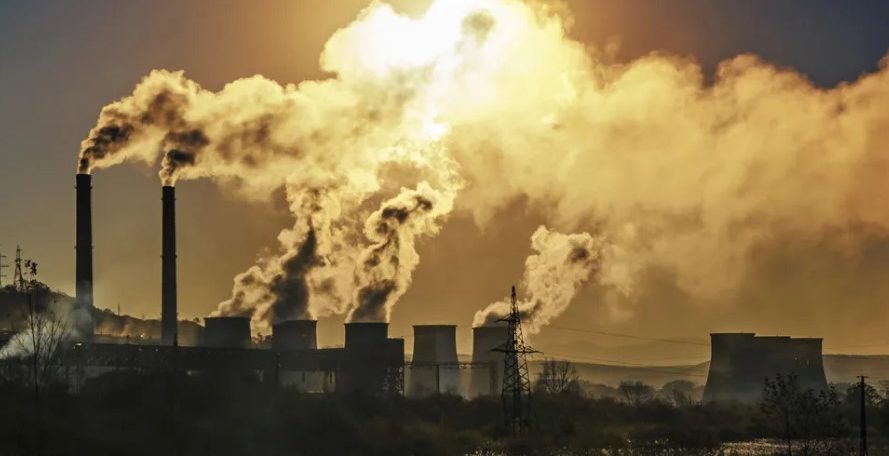In this Article we will be looking at Definition of Greenhouse Effect, Causes of this Effects, Effects and Prevention of Greenhouse Effect.
Greenhouse gases allow the sun’s light to shine onto Earth’s surface, and then the gases, such as ozone, trap the heat that reflects back from the surface inside Earth’s atmosphere. The gases act like the glass walls of a greenhouse—thus the name, greenhouse gas. Some greenhouse gases come from natural sources, for example, evaporation adds water vapor to the atmosphere. Animals and plants release carbon dioxide when they respire, or breathe. Methane is released naturally from decomposition. There is evidence that suggests methane is released in low-oxygen environments, such as swamps or landfills. Volcanoes—both on land and under the ocean—release greenhouse gases, so periods of high volcanic activity tend to be warmer.
Read: Minister advocates production of green hydrogen as another energy source
The industrial development of Human society over the past two centuries has led to a significant increase in the level of greenhouse gases in the atmosphere. These gases are emitted from Human industrial activity such as cars and factories. The rate of greenhouse gas emissions from Human activity is also increasing. More gases in the atmosphere leads to an increase in the severity of the greenhouse effect, and global temperatures have begun to rise as a result. This has many consequences for the planet, a popular example being the melting of the polar ice caps.
What is Greenhouse Effect?
The greenhouse effect is the trapping of the sun’s heat in the atmosphere of a planet by gases in that atmosphere. It has a lot in common with how the glass of a greenhouse traps heat inside but has more trouble leaving.
Read: Gas suppliers request payments for petroleum products in naira
Greenhouse effect can also be defined as a process by which radiations from the sun are absorbed by the greenhouse gases and not reflected back into space. This insulates the surface of the earth and prevents it from freezing and this gas effect is natural. It is important for life on Earth. Without it the Earth’s average temperature would be around –18 or –19 degrees Celsius (0- or 1-degree Fahrenheit). Earth would be locked in an ice age. It helps the Earth’s actual average temperature which is 14 degrees Celsius (57 degrees Fahrenheit).

Causes of the Greenhouse Effect
The major causes are:
- Burning of Fossil Fuels: Burning fossil fuels produces huge quantities of carbon dioxide (CO2) which is a greenhouse gas. Carbon dioxide along with other greenhouse gasses such as methane, nitrous oxide and chlorofluorocarbons (CFCs) are changing the composition of the atmosphere and are adding to the greenhouse effect.
- Deforestation: Plants and trees take in carbon dioxide and release oxygen. Due to the cutting of trees, there is a considerable increase in the greenhouse gases which increases the earth’s temperature.
- Farming: Nitrous oxide used in fertilizers is one of the contributors to the greenhouse effect in the atmosphere.
- Industrial Waste: The industries and factories produce harmful gases which are released in the atmosphere. Landfills also release carbon dioxide and methane that adds to the greenhouse gases.
Effects and Solution:
Depletion of Ozone Layer: Ozone Layer protects the earth from harmful ultraviolet rays from the sun. It is found in the upper regions of the stratosphere. The depletion of the ozone layer results in the entry of the harmful UV low-oxygen environments rays to the earth’s surface that might lead to skin cancer and can also change the climate drastically.
Read: GOVERNMENT TO CUT OIL AND GAS EMISSIONS BY 60%
Acidification of Water Bodies: These gases mix with the rainwater and fall as acid rain. This leads to the acidification of water bodies. The rainwater carries the contaminants along with it and falls into the river, streams and lakes thereby causing their acidification. Seasons can also shift which affects the migration patterns of a lot of animals.
Smog and Air Pollution: smog is generally formed by the accumulation of more greenhouse gases including nitrogen and sulfur oxides. The major contributors to the formation of smog are automobile and industrial emissions, agricultural fires, natural forest fires and the reaction of these chemicals among themselves.
Global Warming: The main cause for this environmental issue is the increased volumes of greenhouse gases such as carbon dioxide and methane released by the burning of fossil fuels, emissions from the vehicles, industries and other human activities.
Prevention:
- Reduce the greenhouse effect on the earth.
- There is need to reduce the emission of greenhouse gases.
- Planting more trees and reducing deforestation.
- Reducing the consumption of fossil fuels will reduce pollution and the greenhouse effect.
- Conservation of energy is also a method to reduce greenhouse gases emission.

